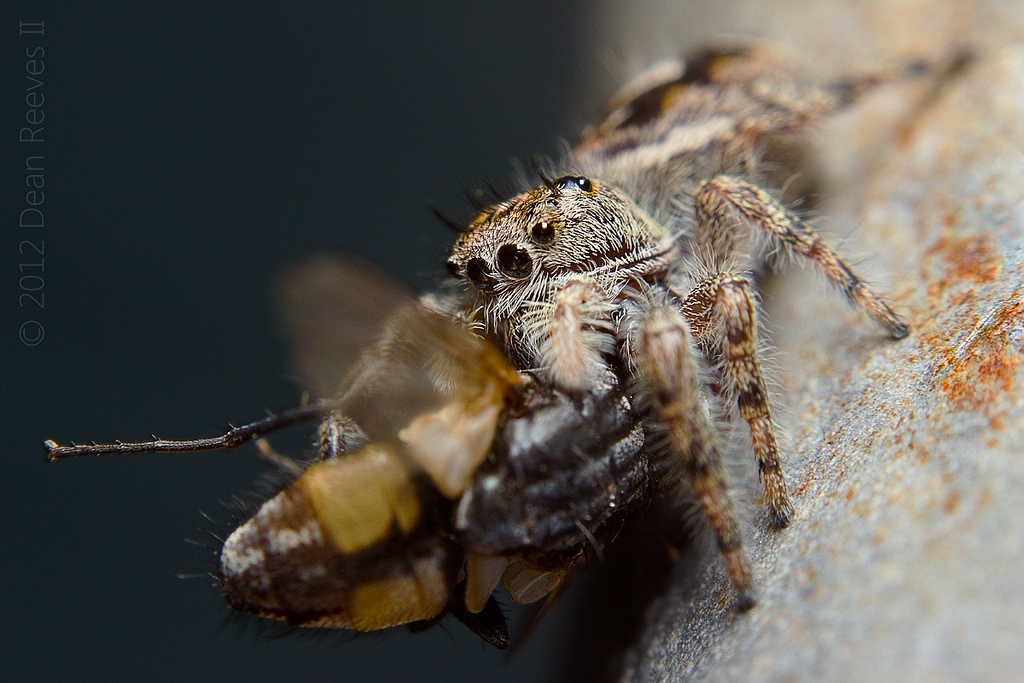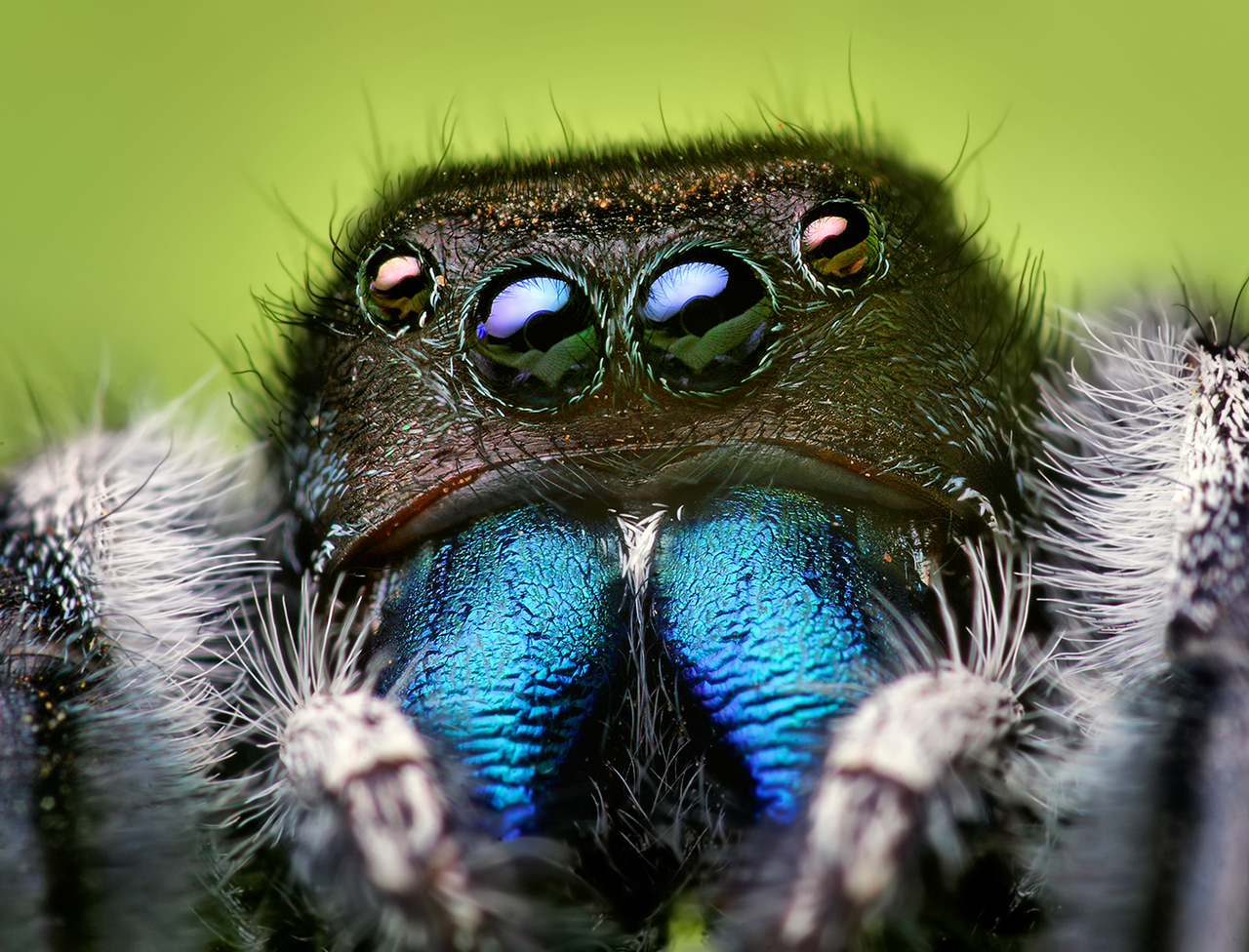Nutrition
Phidippus audax is attracted to both sedentary and flying prey.
They feed on a variety of insects such as
moths, flies, and
grasshoppers, as well as other spiders, including
Phidippus (Hill 2006). Phidippus audax spiders like the sunshine and
do their hunting during the day. The salticids slowly stalk
their prey, almost cat-like. When the spider comes close to its
prey it pauses and lowers its body to fasten a silk thread, or
“safety line,” to the substrate it is on (This is in case it
should miss its prey, the thread will keep it from hitting the
ground). Then jumps to its prey. Like web-building spiders, the salticids can locate prey precisely from
a distance. The difference is that web-building spiders use
vibrations on their web, and salticids use their uniquely
precise eyesight to locate their prey.

One fascinating thing about their leaping ability is that they
do not have to take a straight path to their prey. Instead, the
salticids can leap and, in a sense, take a detour to its prey,
so as to go unnoticed. This unique feature of their jump shows
that they possess the ability to problem-solve, catching the
attention of many researchers (Tarsitano 2006). When not
leaping to catch prey, the salticids are active searchers, often
walking around and stopping to look around in search for prey.
They actively pursue and attack any prey they locate. This is in
contrast to most spiders that spend more time visually searching
for prey from one place and then actively stalking it. There are
a numerous amount (too many to name on this website) of
adaptations that the salticids have obtained pertaining to their
hunting. Phidippus audax, specifically, has been seen leaping
into other spiders’ nests to catch the spider itself (araneophagy)
or insects caught in another spider's web (kleptoparasitism)
(Hill 2006).
Click here to learn more about how
they can see their prey.
